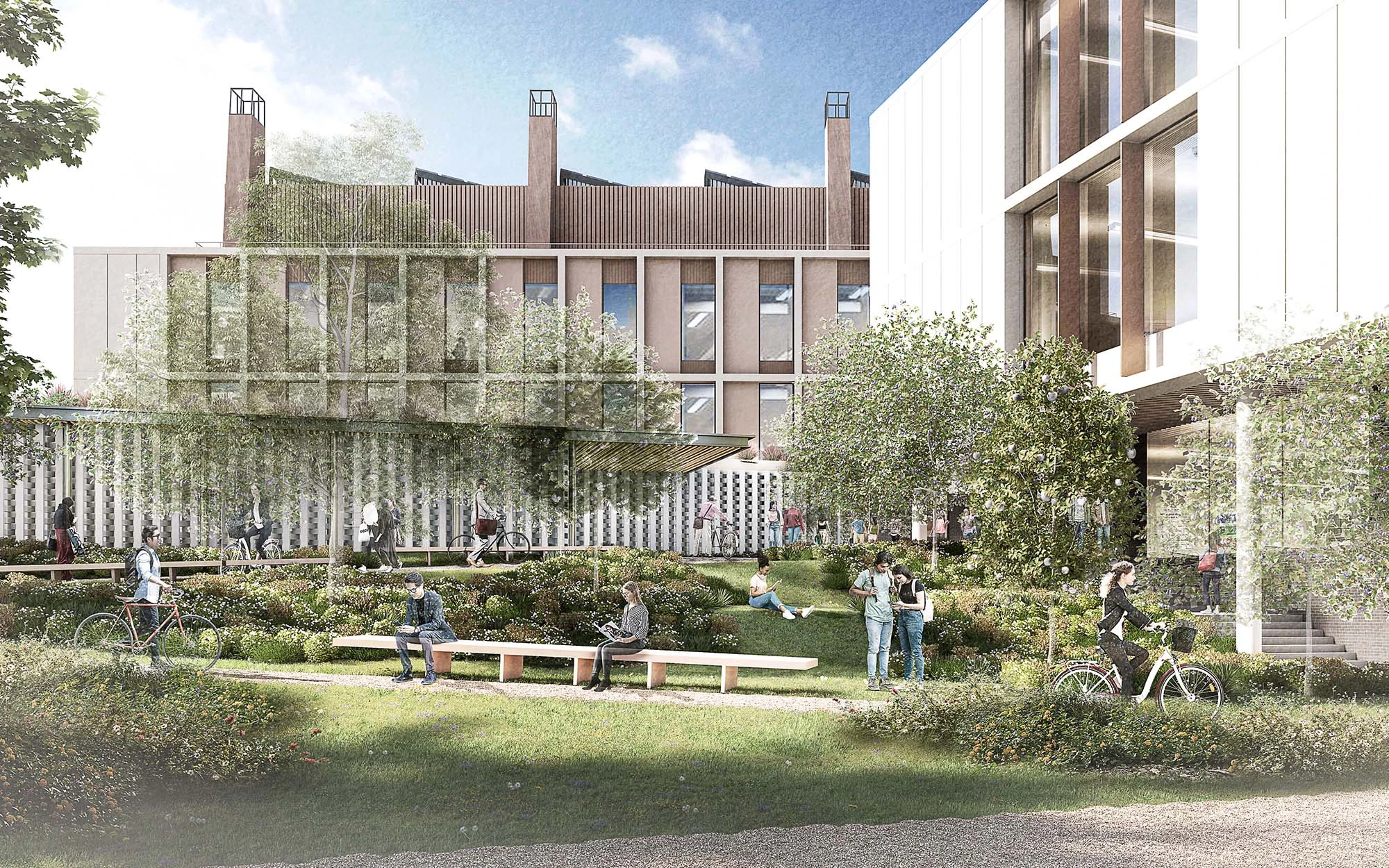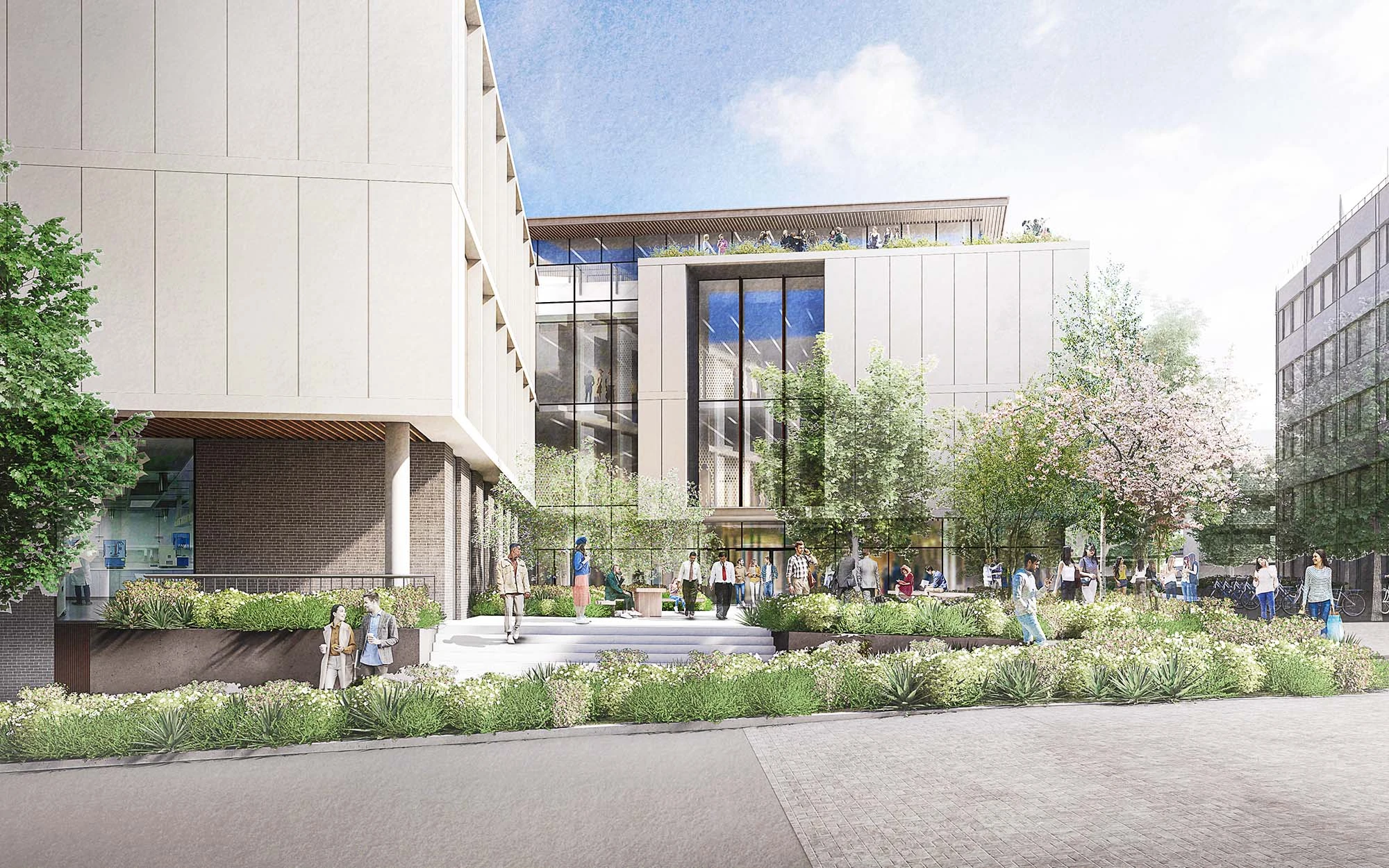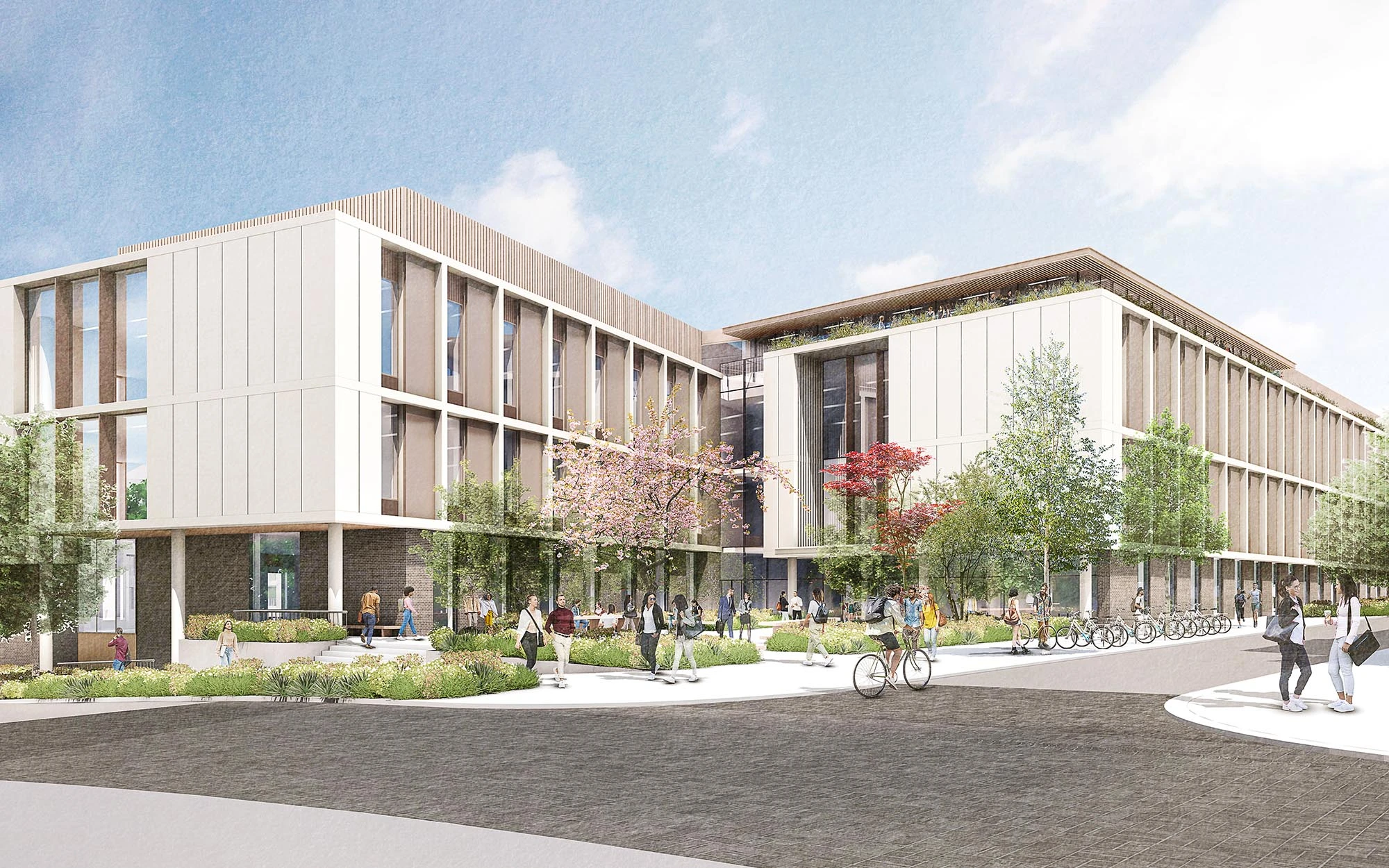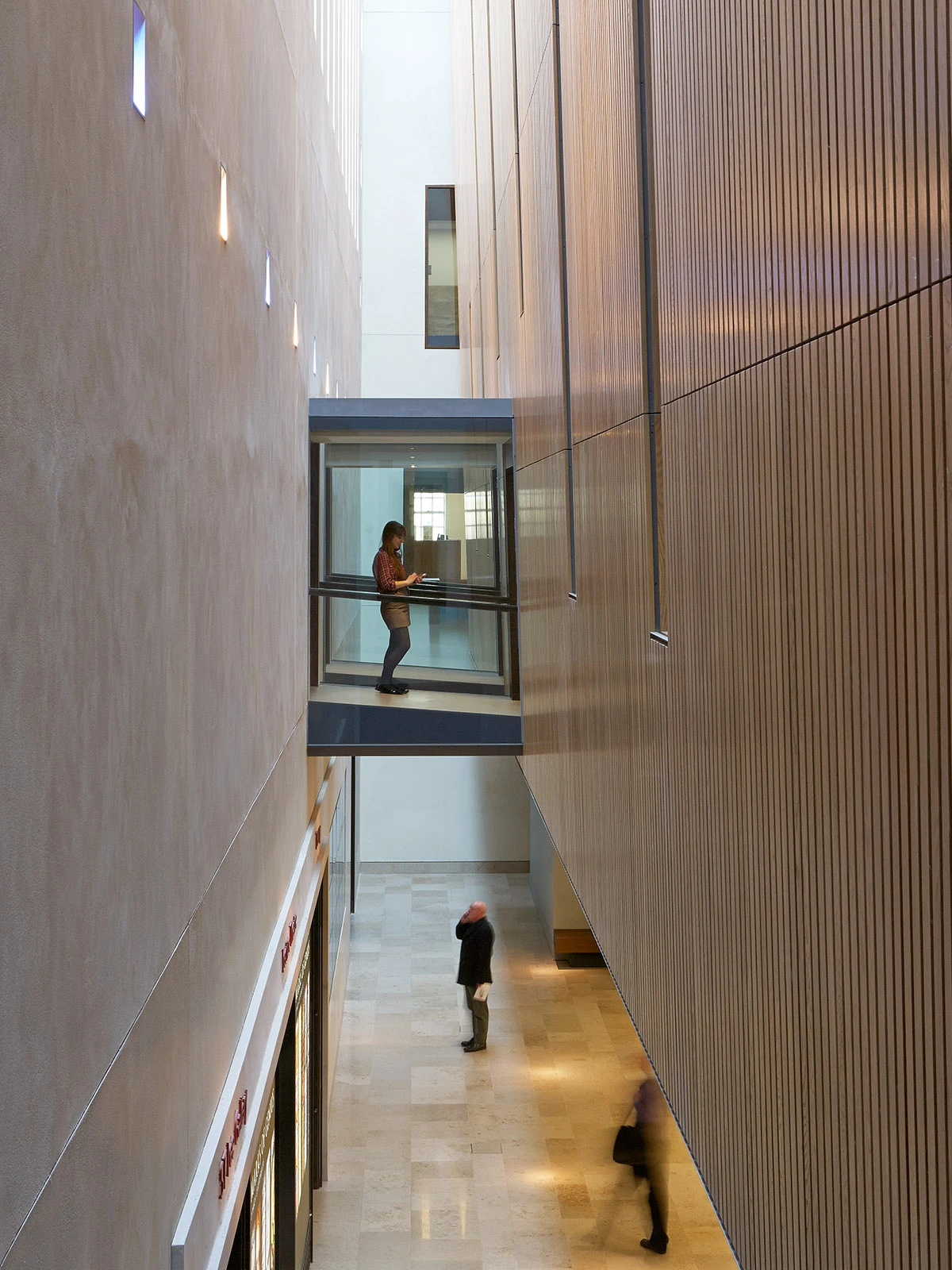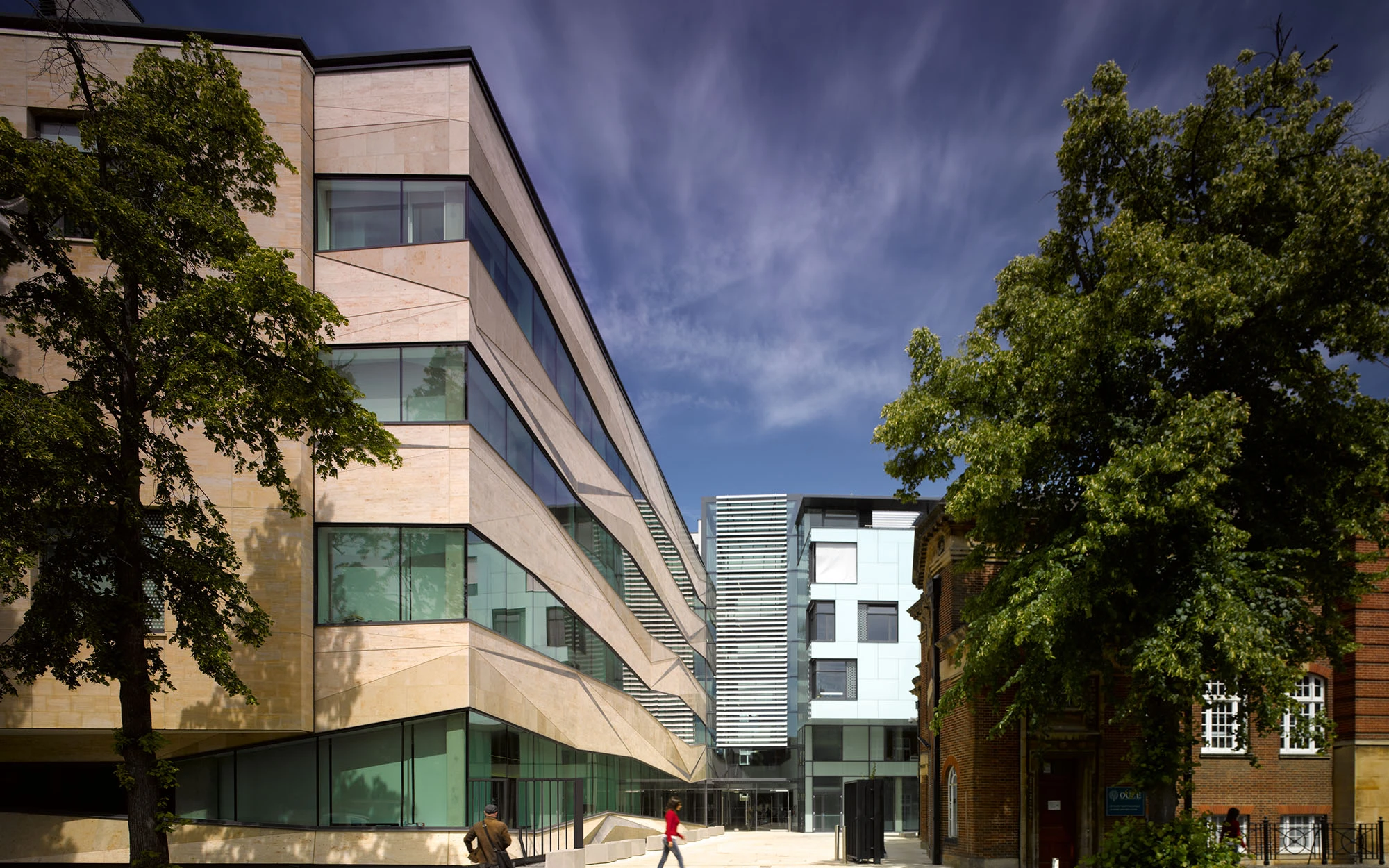Oxford North is a new £700 million life sciences innovation district that will deliver one million sq ft of laboratory and workspaces, 480 new homes, hotel, nursery, cafes, bars, three public parks and infrastructure. WilkinsonEyre has designed Plot B, consisting of a five-floor global HQ laboratory and office building totalling 177,900 sq ft, which received planning permission in September 2023.
The architectural design intent of Plot B is to present a lower scale gateway building to the Oxford North development that sits in the foreground of the taller buildings behind when approaching the site from the A40 in either direction. The plan diagram of the building is a clear expression of its function – two fingers of accommodation that align with the two roads at the plot perimeter with a central services wedge between them. Entrances to the north-west and south-east are sheltered and have landscaped forecourts in the front.
“It has been a fascinating process to develop with the team an efficient commercial life sciences building with an appropriate architecture and landscape setting in this significant new place in Oxford.”
Stafford Critchlow, Director
The facades have been developed with a focus on rational geometry and proportion. There is a rhythm to the vertical windows, which are recessed into the outer frame and set to one side, benefiting from passive sun shading depending on façade orientation. The first and second floors are articulated as a middle band over a recessed brick base to the ground floor and a setback roofscape of plant screen, PV panels and potential café/common room on the 3rd floor. The spacing of chimney flues punctures the horizontal roofline, providing interest to the building's silhouette and tying the building to its specific Oxford context.
The building will target BREEAM Excellent certification and have 100% electric heating and cooling, efficient lighting, high levels of fabric performance and optimised ventilation to incorporate heat recovery and solar PV technology. This will achieve a minimum 40% reduction in carbon emissions compared with the 2021 Building Regulations.
